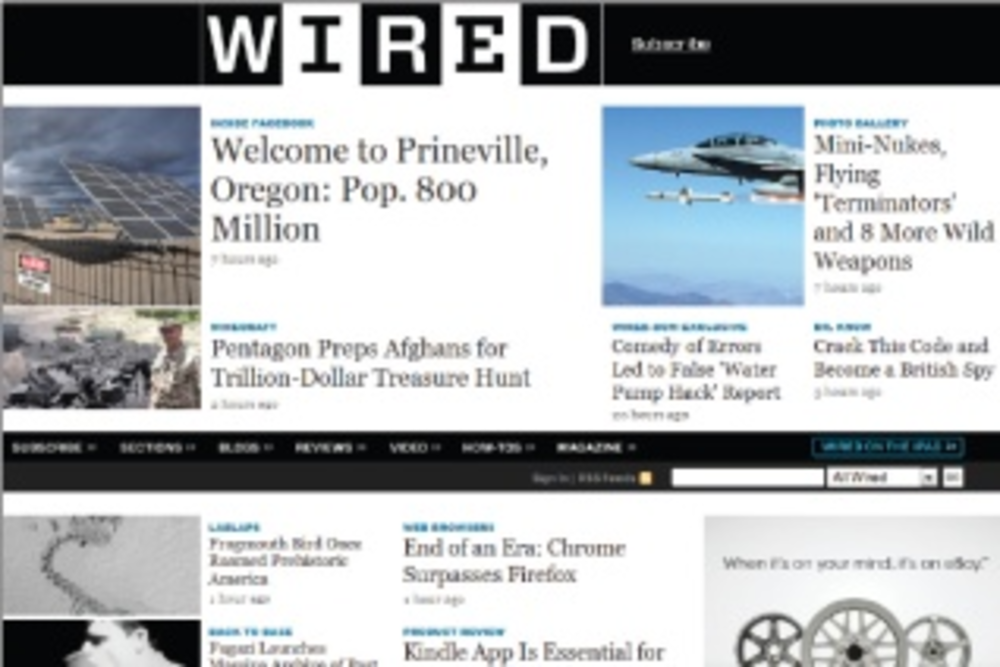Online display advertising sellers are circling the wagons to reassert their position in a crowded market and fend off the swelling role of third parties, such as ad networks and demand-side platforms (DSPs).
Magazine publishing giant Condé Nast created a private ad exchange in November to make available its unsold digital inventory to a select group of advertisers, including Macy’s and eBay, based on their previous spending with the publisher.
“The biggest driving force to go with an exchange is the ability to have more control, control over rates, creative and inventory. With networks you had very little of that. You weren’t really controlling the rates. You’d never be guaranteed about the creative that was coming through,” says Drew Schutte, EVP and chief integration officer at Condé Nast. “And then there was the added challenge of channel conflict. You had salespeople representing your brand that were not part of your team.”
Also in November, Microsoft, AOL and Yahoo agreed to share unsold second-tier inventory. Karsten Weide, research VP of digital media and entertainment at market intelligence firm IDC, calls the partnership “a defensive move against Google,” whose proposed acquisition of display ad firm Admeld in June expanded Google’s access to publishers’ remnant inventory. Admeld powers Condé Nast’s exchange.
Dave Jacobs, SVP of publisher services at AOL, wouldn’t comment on Google’s acquisition of Admeld but says the partnership with Microsoft and Yahoo “should effectively boost CPMs by driving a broader set of advertiser demand.”
“Any time you can put together larger sources of quality inventory supply, we believe it’s a good opportunity for advertisers to achieve efficiencies and simplify the buying process,” Jacobs says. Microsoft declined to make an executive available to comment for this article.
The initiatives come amid a tug-of-war in the online media buying marketplace as companies navigate a sea of third parties while maintaining a direct buying model grafted from traditional channels, such as print and TV. Jim Spanfeller, CEO of Spanfeller Media Group and former Forbes.com CEO, says that ad networks blossomed because of marketers’ and agencies’ willingness to outsource online media buying, but now marketers are becoming dissatisfied with the devaluing of their ads.
Jennifer Kasper, group VP of digital media and multicultural marketing at Macy’s, says via email that Condé Nast’s exchange will increase its ads’ efficiency. “The new platform means Macy’s can utilize audience buying and segmentation capabilities within the Condé Nast portfolio as more of a direct response tool, helping our
marketing dollars work harder,” Kasper explains.
While the online media sellers call their initiatives programs that drive value for advertisers, Spanfeller says they’re also intended to undercut the role of ad networks.
The Condé Nast exchange is “a way for Condé Nast to sell unsold inventory without saying they’re an ad network,” Spanfeller says. The Microsoft, AOL and Yahoo partnership’s “goal is to increase CPMs for second-tier unsold inventory,” he says. “They’re trying to take all the aggregators out of the picture … and in place put a sales mechanism that will sell at lower CPMs, and in a way that is more constructive.”
Starting Jan. 12, Yahoo will curtail DSPs’ access to its non-reserved inventory by requiring the companies to directly purchase inventory via Yahoo’s sales team or through DSP clients.
“We believe that that’s a bold move and one that is helpful in that in the emergence of the ecosystem. There have been a number of players that have set up in the middle of the relationship between the publisher on the supply side and the demand on the agency side or direct advertiser side,” says Seth Dallaire, VP of sales at Yahoo. “That’s created some confusion in the marketplace, and we’re looking to get to a more transparent relationship, a more direct relationship with our advertising agency partners and our direct client advertising partners.”







